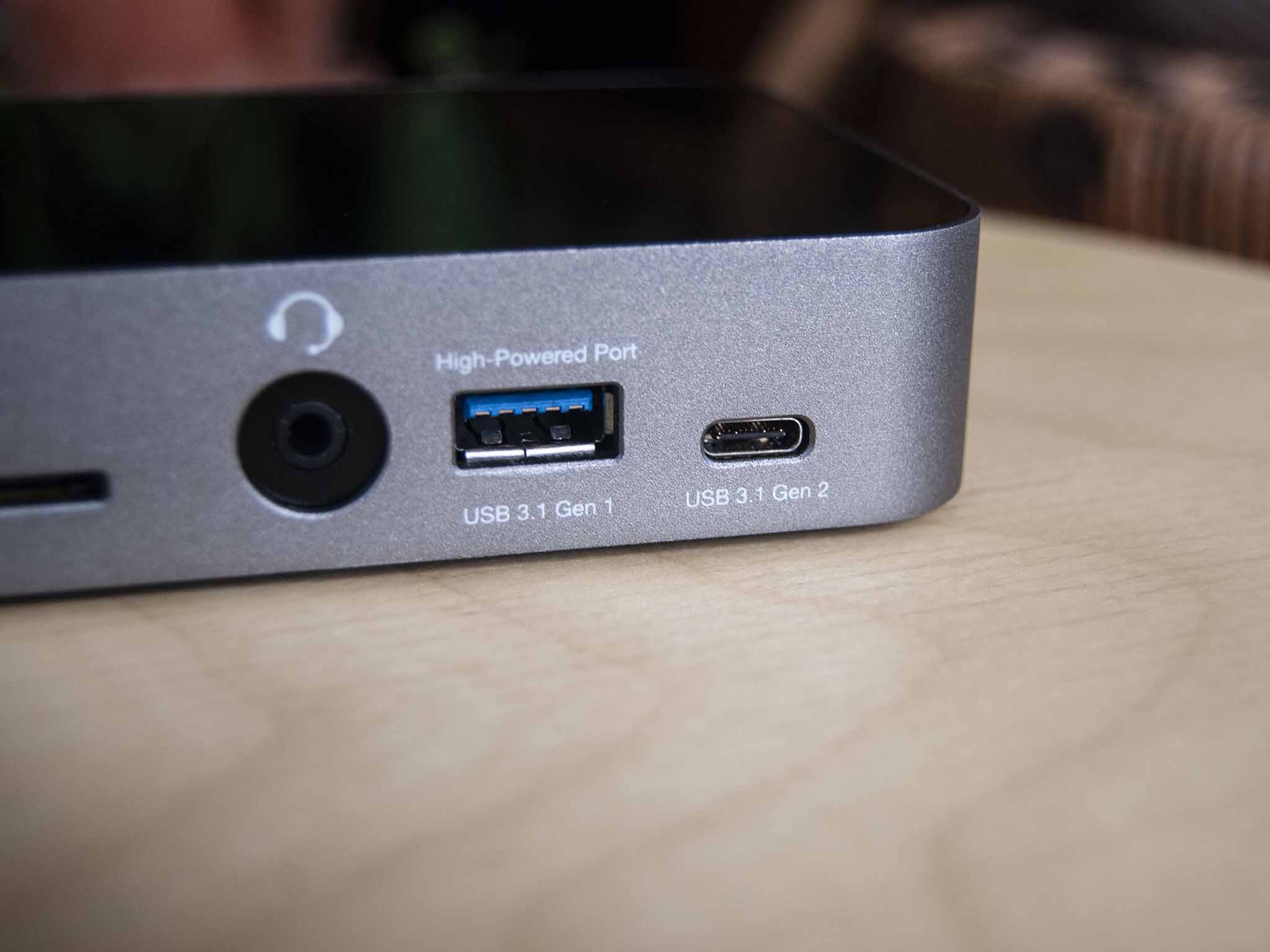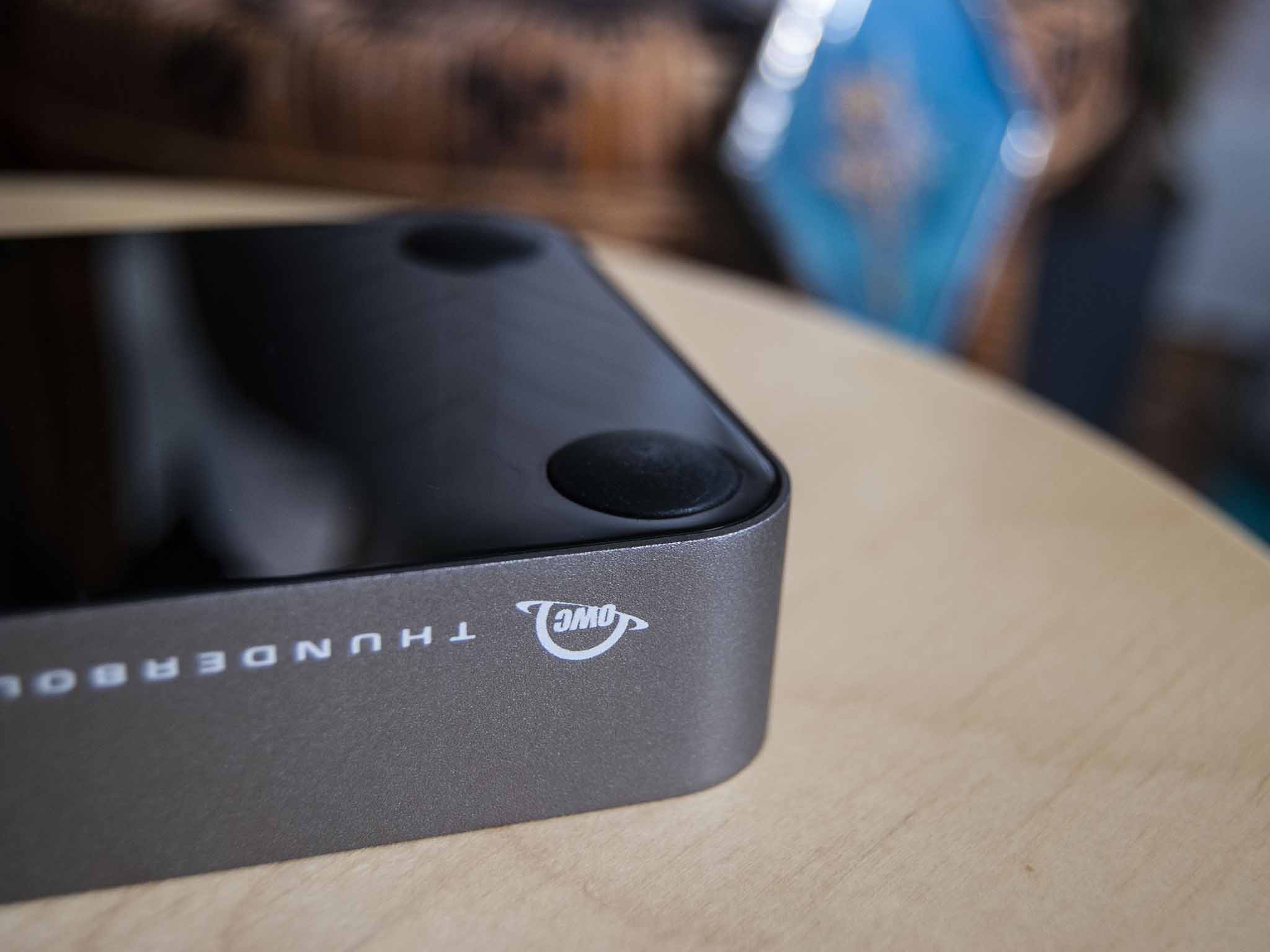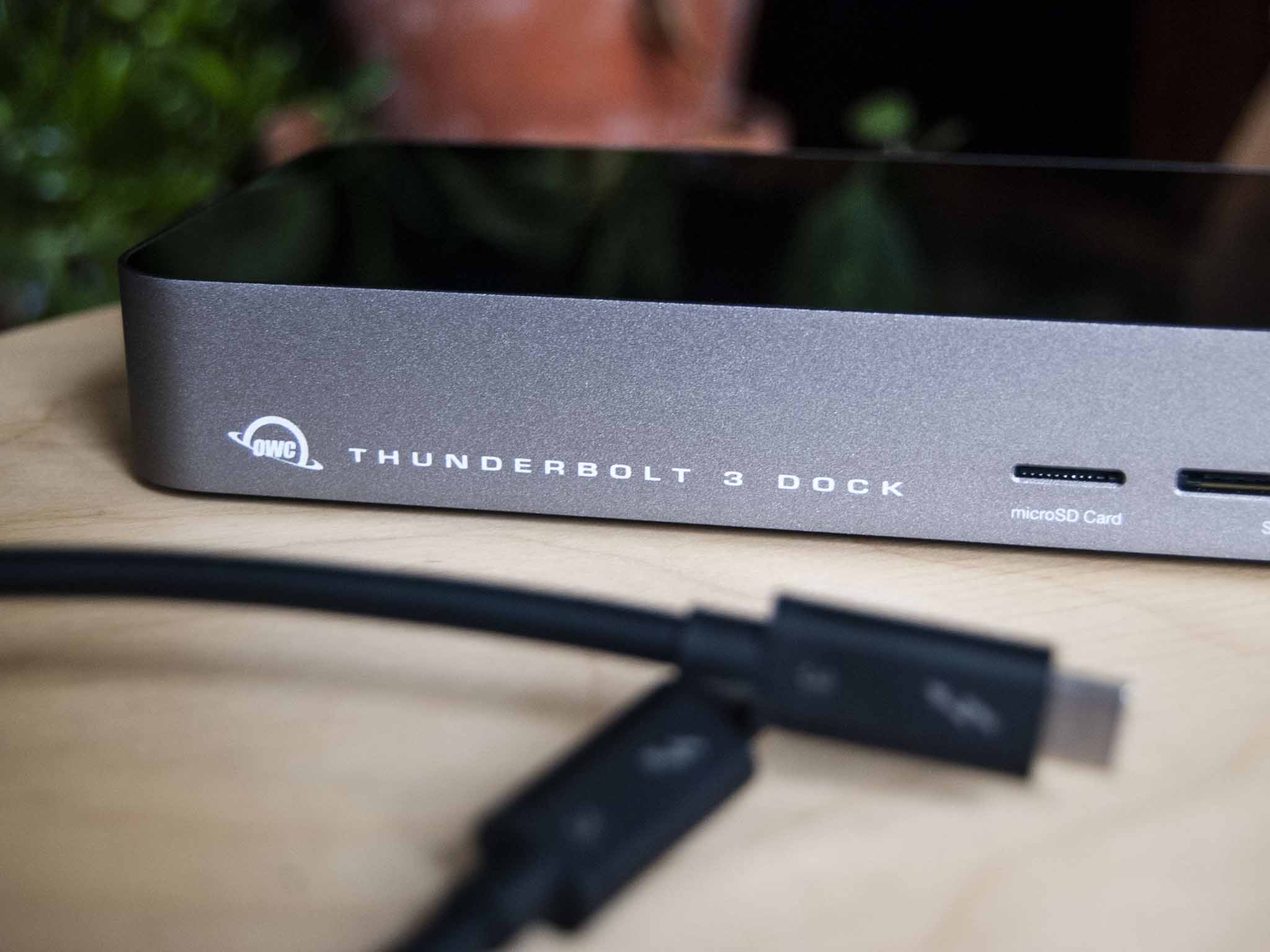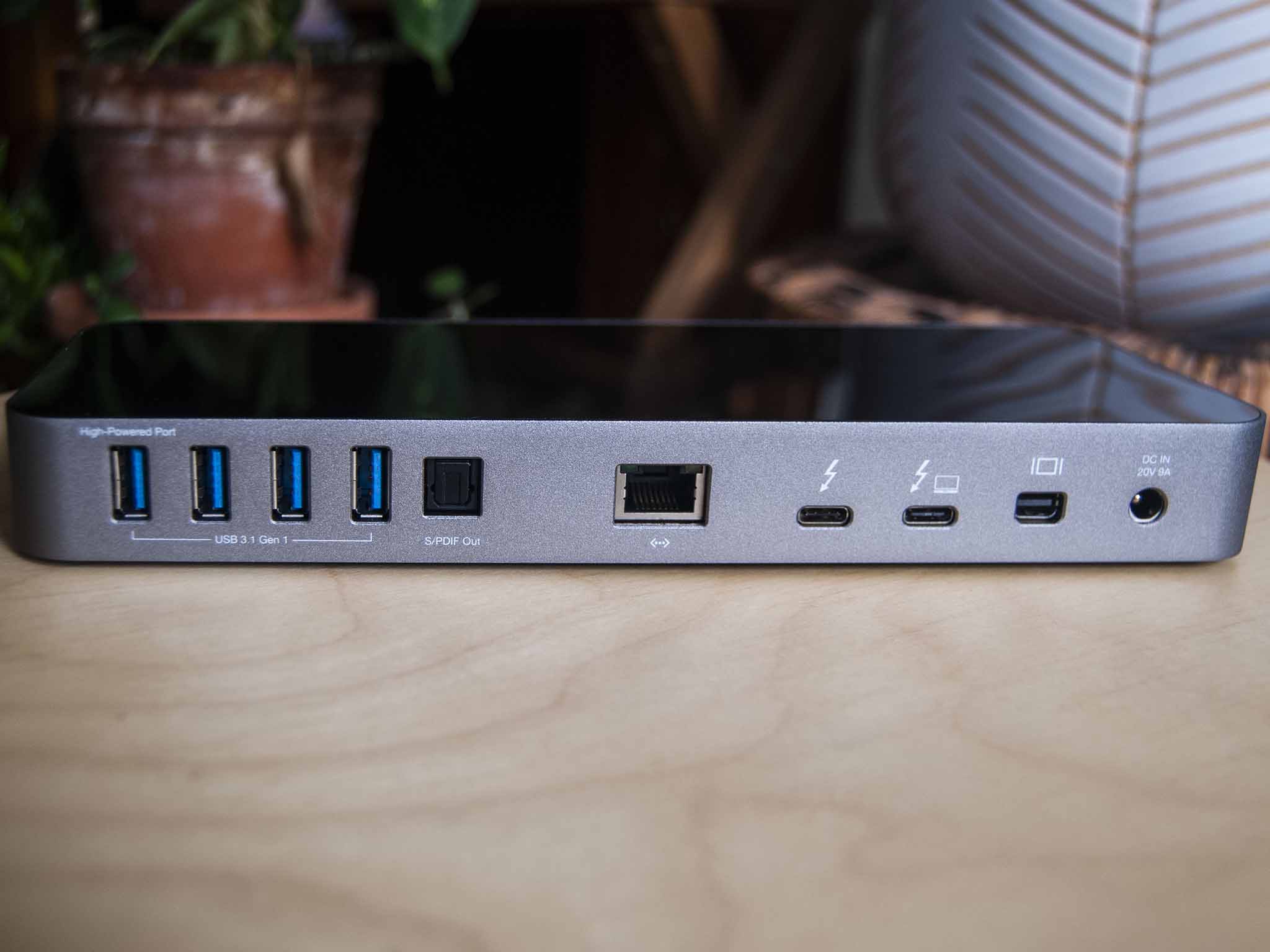OWC makes many great PC accessories, and its docking station lineup competes with some of the best Thunderbolt 3 docks out there today. Aluminum shell, host laptop charging, and high-res display support are all included, as well as 14 total ports. I've been using it for a couple of weeks for all connectivity purposes to see what it's all about and, ultimately, whether or not it's worth a buy.

Bottom line: The OWC Thunderbolt 3 dock brings 13 ports (14 with the host) for outstanding connectivity, and it will charge your laptop with up to 85W of power. Just be sure you don't want full DisplayPort and don't mind paying a bit more compared to the direct competition.
Pros
- UHS-II SD and microSD readers
- Downstream Thunderbolt 3
- 85W of charging power to host
- Dual 4K@60Hz display support
- Sturdy aluminum construction
Cons
- Uses Mini DisplayPort
- SD card readers use one chipset
- Relatively expensive
What I love about the OWC Thunderbolt 3 dock
OWC's Thunderbolt 3 dock follows the standard design that most similar hardware is using, with a flat, rectangular chassis and ports on front and back. The dock is ringed by a "Space Gray" colored aluminum wall that provides rigidity, with a black plastic top and bottom. It weighs in at just more than a pound (0.5kg) and measures nine inches (23cm) wide. There's not really an option for standing this dock up vertically, so you will need to keep some space open on your desk. The dock has four rubber feet on the bottom that successfully keep it from slipping around when multiple cables are connected.
| Category | Spec |
|---|---|
| Front ports | USB-C 3.1 (Gen 2) USB-A 3.1 (Gen 1) 3.5mm audio SD card reader microSD card reader |
| Rear ports | Two Thunderbolt 3 (one host) Mini DisplayPort 1.2 Four USB-A 3.1 (Gen 1) Ethernet S/PDIF |
| Max display res | 5K at 60Hz Dual 4K at 60Hz |
| Power delivery | Up to 85W |
| Dimensions | 9.0 (W) x 3.5 (D) x 1.0 (H) inches (23cm x 8.9cm x 2.5cm) |
| Weight | 1.2 pounds (0.5kg) |
| Warranty | Two years |
Included in the box are a sizable power supply and a removable Thunderbolt 3 host cable. With everything connected, your laptop gets access to 13 extra ports, the fourteenth being the host Thunderbolt 3 port. The rear of the dock has most of the connectivity, including four USB-A 3.1 (Gen 1), S/PDIF Out, Ethernet, downstream Thunderbolt 3 (and the other for host), Mini DisplayPort, and a barrel adapter plug. You can connect many devices and not worry about cable clutter thanks to the rear orientation.
The front of the dock is home to ports that are often being plugged and unplugged, like a microSD card reader, SD card reader, 3.5mm audio jack, USB-A 3.1 (Gen 1), and USB-C 3.1 (Gen 2). Testing the SD card reader, I got back a read speed of 275.15 MB/s and write speed of 141.2 MB/s, solid results that indicate it's a UHS-II reader. Testing again with the MicroSD slot, I saw 274.29 MB/s read and 152.26 MB/s write speeds, meaning it's also able to realize the full potential of UHS-II cards. The microSD card reader has a "click and stick" function that keeps it secure (and almost flush) in the reader, while the SD card sticks out a bit and uses a friction hold.


The host Thunderbolt 3 cable can deliver up to 85W of charging power back to a laptop, which is enough to keep just about any Ultrabook topped up. If you're using a laptop with a dedicated GPU and high-end CPU, you might not be able to keep the battery charged, but for something like my Dell XPS 13, there were no issues. USB ports on the dock also offer charging capabilities. I got about 6.5W of charging power from the front USB-A port and one rear "high-power" USB-A port. The other three USB-A ports on the back of the dock offered up about only about 0.3W and are intended for data transfer. The USB-C port on the front delivered about 10W of power.
One thing lacking from the CalDigit USB-C Pro docking I also reviewed is downstream Thunderbolt 3. That's alleviated here with an extra Thunderbolt 3 port aside from the host cable. You can connect and even daisy-chain multiple Thunderbolt 3 devices from this port. Say you have a couple of picks from our best NAS for home collection as well as an extra Thunderbolt 3 display, you can theoretically run these from the same port. It will depend on the hardware you have, though, and do note that the dock does not support Multi-Stream Transport (MST).
The OWC Thunderbolt 3 dock handles up to a single 5K display at a 60Hz refresh rate through the Thunderbolt 3 port connected directly to a monitor with Thunderbolt 3. Otherwise, you're looking at dual 4K at a 60Hz refresh rate with a combination of Thunderbolt 3 and Mini DisplayPort 1.2. That will provide a decent setup for most people, and it can all be ejected at once with a fancy little piece of "Dock Ejector" software available for download from OWC.
All the latest news, reviews, and guides for Windows and Xbox diehards.
What I dislike about the OWC Thunderbolt 3 dock
OWC's Thunderbolt 3 dock does a lot right, and I really didn't come across any issues in my daily workflow. However, there are some things to note. If you're one who wants to run software or write large files to SD and microSD cards simultaneously, you will run into problems due to both readers using the same controller chip. Attempting to simultaneously read or write from both cards didn't pan out when testing, though I could move files from one card to another without issue.
On a dock that costs more than most of the competition, it would also be nice to see a full DisplayPort rather than Mini DisplayPort. Having to pull out an adapter to connect a standard DisplayPort cable isn't going to stop a monitor from being plugged in, but it is annoying. And when there are competing docking stations on the market — like the CalDigit TS3 Plus — that costs considerably less money and still bring features like 85W charging, similar ports (with full-size DisplayPort and downstream Thunderbolt 3), high-res display support, and a more compact build, it might be tough to justify opting for OWC's dock. At least unless you absolutely need the microSD card reader, since the TS3 Plus only has full-size SD.
Should you buy the OWC Thunderbolt 3 dock?
As Ultrabooks slim down and shed ports, OWC's Thunderbolt 3 dock is an excellent addition to most workflows that require multiple accessories and monitors. Having the majority of ports on the back makes for easy cable management, you get a microSD and SD card reader (though they use the same controller chip), 85W of charging keeps your laptop battery topped up, and downstream Thunderbolt 3 makes it possible to daisy-chain compatible devices.
The Mini DisplayPort will likely require an adapter, which is a pain, but other than that, this is a well-rounded dock. Just watch out for the price; the mighty CalDigit TS3 Plus can generally be found for less money. And if you plan on using multiple laptops, some with only USB-C and some with full Thunderbolt 3, the CalDigit USB-C Pro dock is also a great option.

Cale Hunt brings to Windows Central more than nine years of experience writing about laptops, PCs, accessories, games, and beyond. If it runs Windows or in some way complements the hardware, there’s a good chance he knows about it, has written about it, or is already busy testing it.




